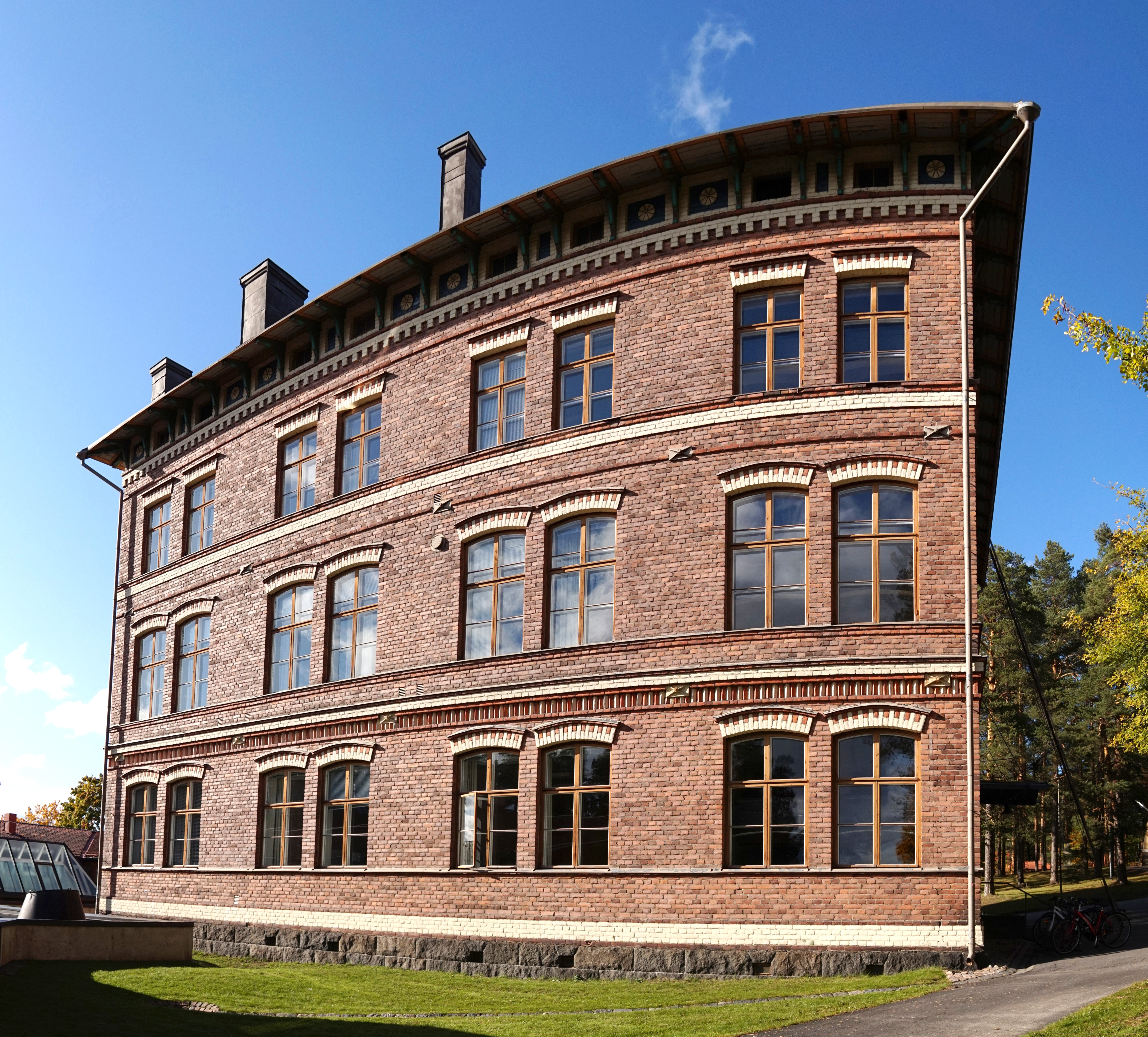

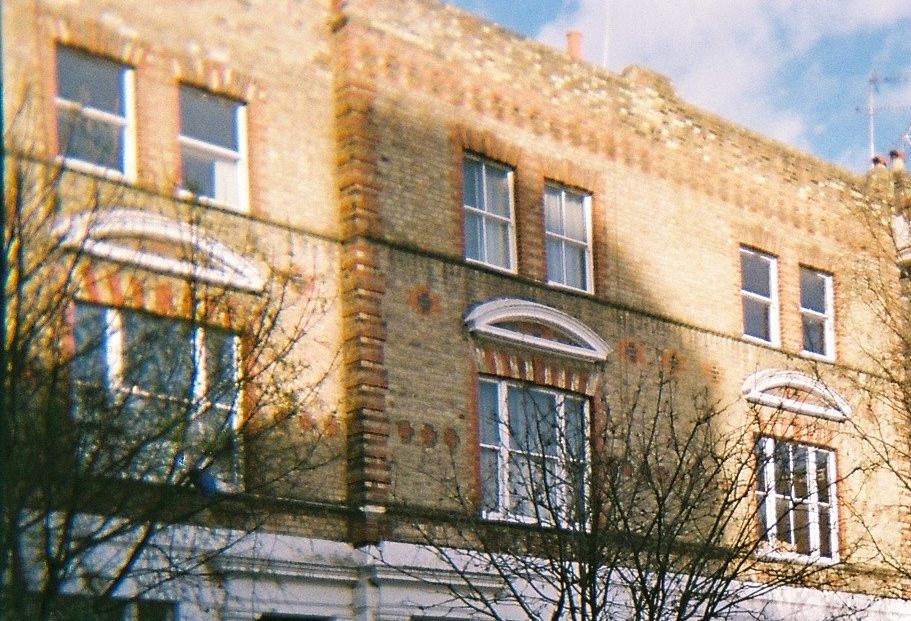 Brickwork is
Brickwork is 
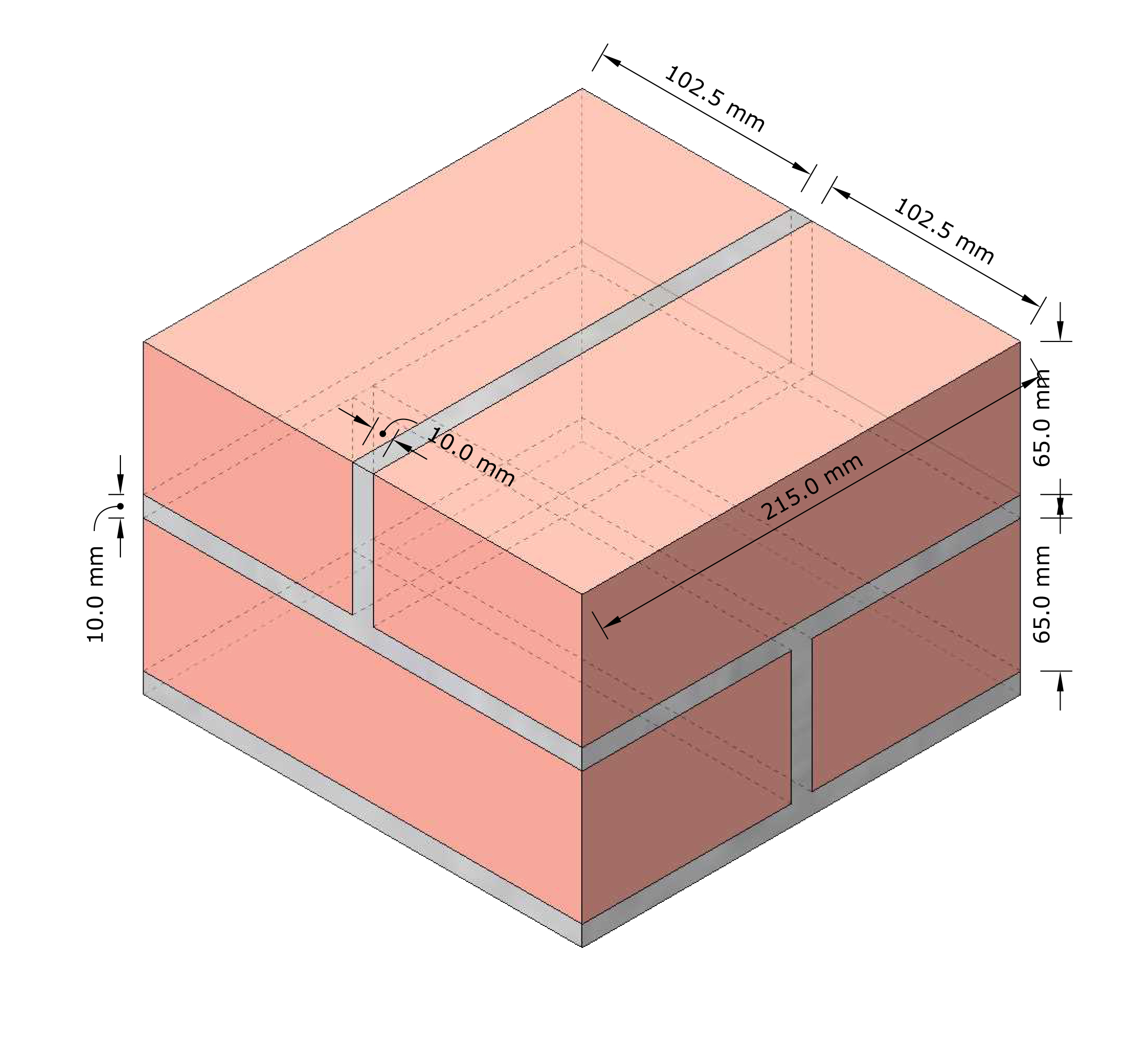 Brick dimensions are expressed in construction or technical documents in two ways as co-ordinating dimensions and working dimensions.
* Coordination dimensions are the actual physical dimensions of the brick with the mortar required on one header face, one stretcher face and one bed.
* Working dimensions is the size of a manufactured brick. It is also called the nominal size of a brick.
Brick size may be slightly different due to shrinkage or distortion due to firing, etc.
An example of a co-ordinating metric commonly used for bricks in the UK is as follows:
* Bricks of dimensions 215 mm à 102.5 mm à 65 mm;
* Mortar beds (horizontal) and perpends (vertical) of a uniform 10 mm.
In this case the co-ordinating metric works because the length of a single brick (215 mm) is equal to the total of the width of a brick (102.5 mm) plus a perpend (10 mm) plus the width of a second brick (102.5 mm).
There are many other brick sizes worldwide, and many of them use this same co-ordinating principle.
Brick dimensions are expressed in construction or technical documents in two ways as co-ordinating dimensions and working dimensions.
* Coordination dimensions are the actual physical dimensions of the brick with the mortar required on one header face, one stretcher face and one bed.
* Working dimensions is the size of a manufactured brick. It is also called the nominal size of a brick.
Brick size may be slightly different due to shrinkage or distortion due to firing, etc.
An example of a co-ordinating metric commonly used for bricks in the UK is as follows:
* Bricks of dimensions 215 mm à 102.5 mm à 65 mm;
* Mortar beds (horizontal) and perpends (vertical) of a uniform 10 mm.
In this case the co-ordinating metric works because the length of a single brick (215 mm) is equal to the total of the width of a brick (102.5 mm) plus a perpend (10 mm) plus the width of a second brick (102.5 mm).
There are many other brick sizes worldwide, and many of them use this same co-ordinating principle.
Terminology
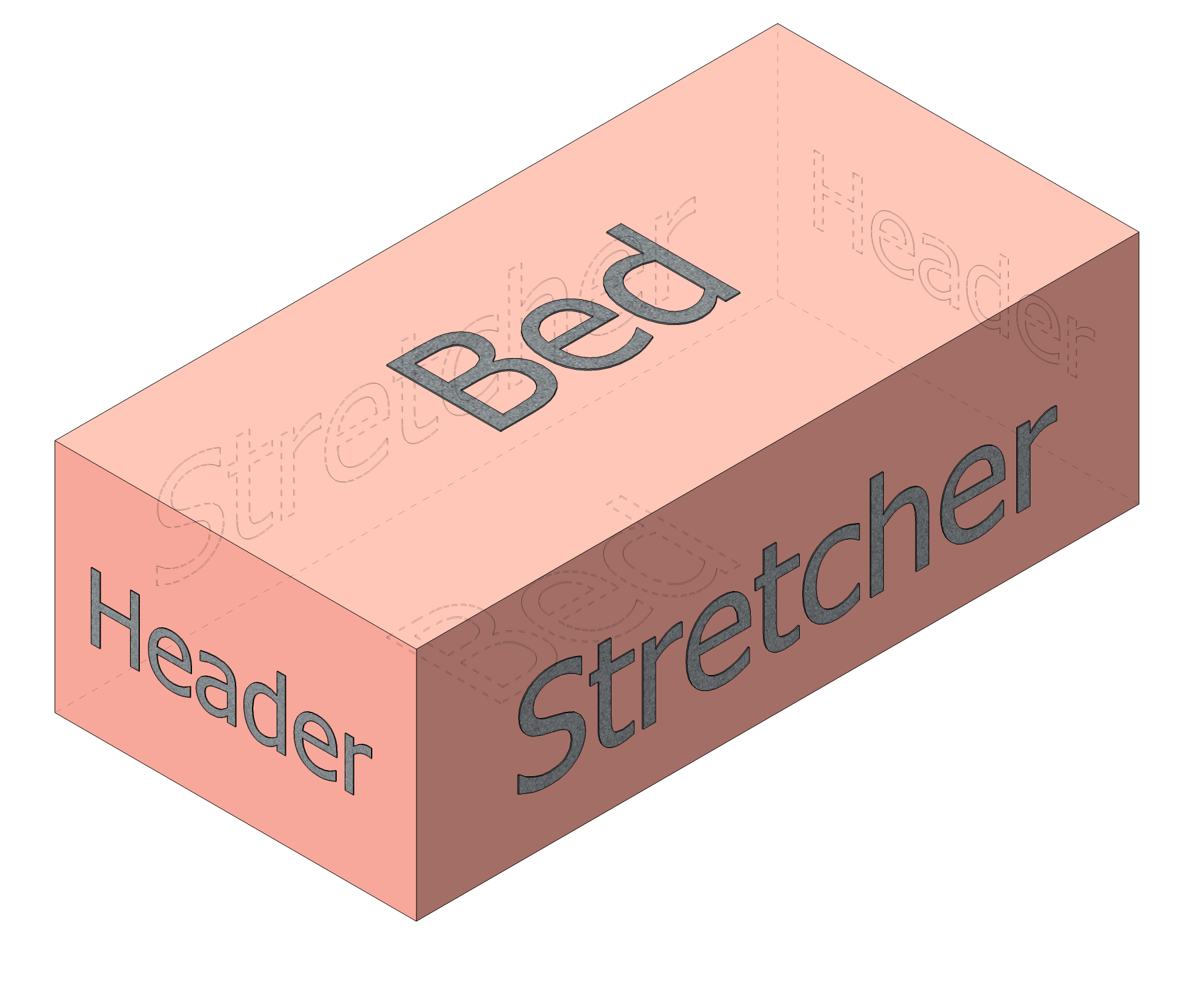 As the most common bricks are rectangular prisms, six surfaces are named as follows:
* Top and bottom surfaces are called Beds
* Ends or narrow surfaces are called Headers or header faces
* Sides or wider surfaces are called Stretchers or stretcher faces
As the most common bricks are rectangular prisms, six surfaces are named as follows:
* Top and bottom surfaces are called Beds
* Ends or narrow surfaces are called Headers or header faces
* Sides or wider surfaces are called Stretchers or stretcher faces
 Mortar placed between bricks is also given separate names with respect to their position. Mortar placed horizontally below or top of a brick is called a bed, and mortar Placed vertically between bricks is called a perpend.
Mortar placed between bricks is also given separate names with respect to their position. Mortar placed horizontally below or top of a brick is called a bed, and mortar Placed vertically between bricks is called a perpend.
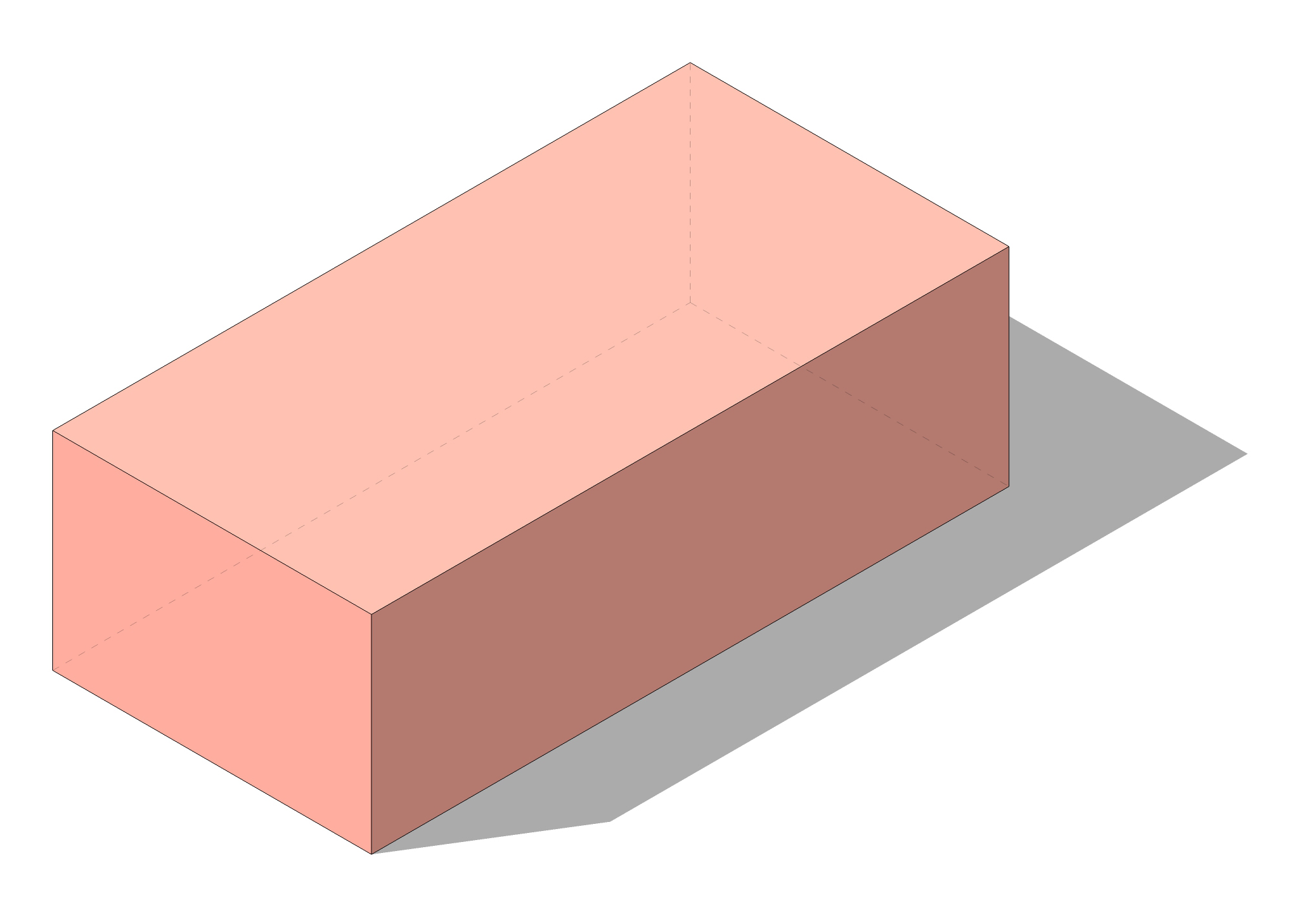
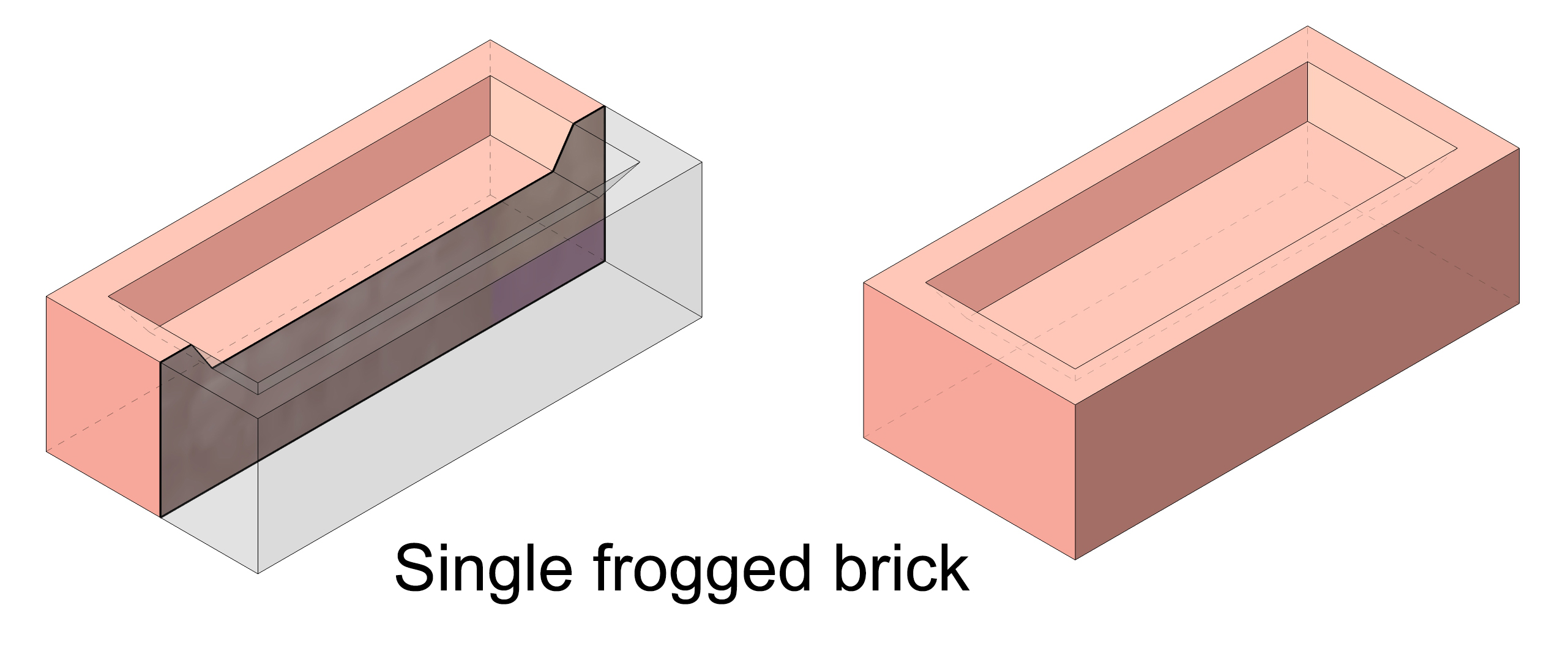


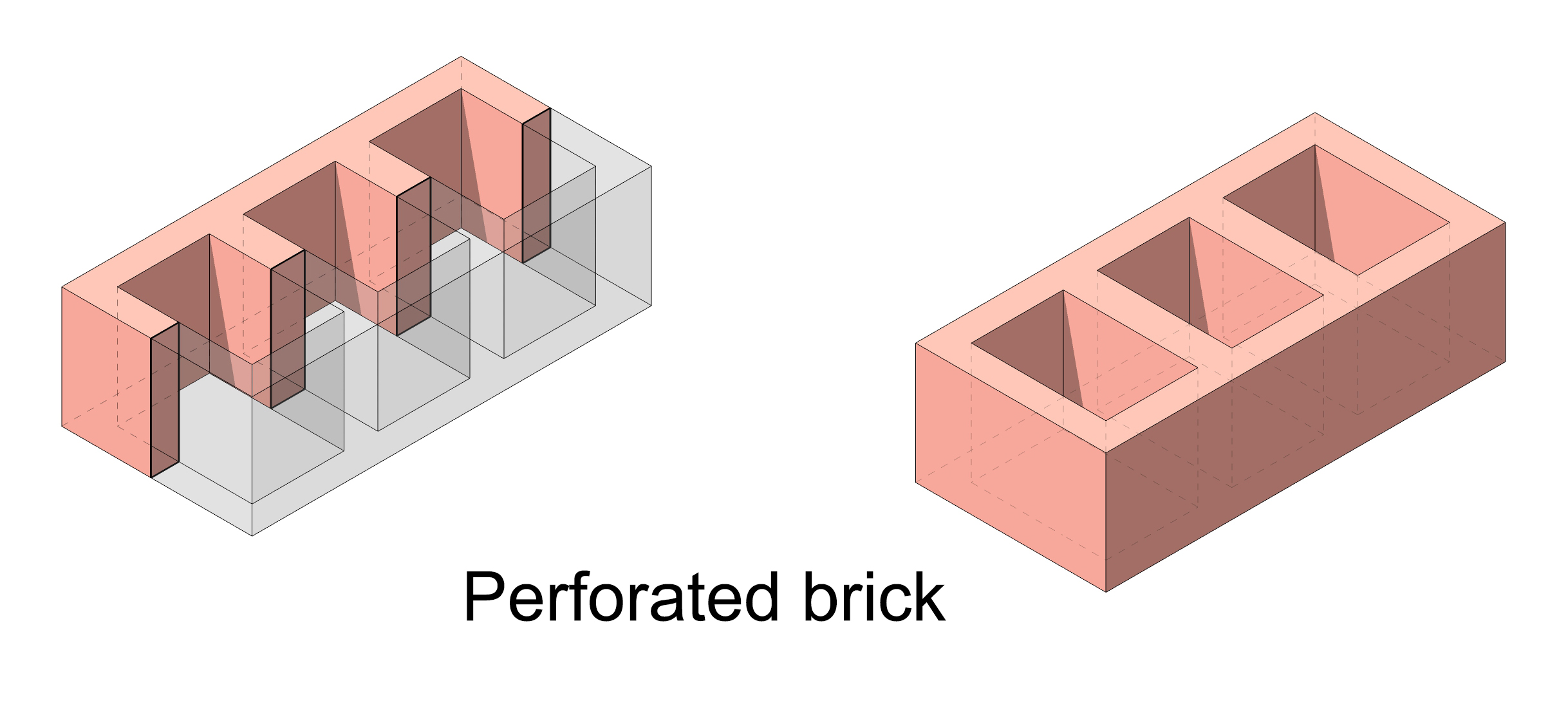 A brick made with just rectilinear dimensions is called a solid brick. Bricks might have a depression on both beds or on a single bed. The depression is called a frog, and the bricks are known as frogged bricks. Frogs can be deep or shallow but should never exceed 20% of the total volume of the brick. Cellular bricks have depressions exceeding 20% of the volume of the brick. Perforated bricks have holes through the brick from bed to bed, cutting it all the way. Most of the building standards and good construction practices recommend the volume of holes should not exceed 20% of the total volume of the brick.
Parts of brickwork include ''bricks'', ''beds'' and ''
A brick made with just rectilinear dimensions is called a solid brick. Bricks might have a depression on both beds or on a single bed. The depression is called a frog, and the bricks are known as frogged bricks. Frogs can be deep or shallow but should never exceed 20% of the total volume of the brick. Cellular bricks have depressions exceeding 20% of the volume of the brick. Perforated bricks have holes through the brick from bed to bed, cutting it all the way. Most of the building standards and good construction practices recommend the volume of holes should not exceed 20% of the total volume of the brick.
Parts of brickwork include ''bricks'', ''beds'' and ''Orientation
Cut
The practice of laying uncut full-sized bricks wherever possible gives brickwork its maximum possible strength. In the diagrams below, such uncut full-sized bricks are coloured as follows: ; ; Occasionally though a brick must be cut to fit a given space, or to be the right shape for fulfilling some particular purpose such as generating an offsetâcalled a ''lap''âat the beginning of a course. In some cases these special shapes or sizes are manufactured. In the diagrams below, some of the cuts most commonly used for generating a lap are coloured as follows: ; : A brick cut to three-quarters of its length, and laid flat with its long, narrow side exposed. ; : A brick cut to three-quarters of its length, and laid flat with its short side exposed. ; : A brick cut in half across its length, and laid flat. ; : A brick cut in half down its width, and laid with its smallest face exposed and standing vertically. A queen closer is often used for the purpose of creating a lap. Less frequently used cuts are all coloured as follows: ; : A brick cut to a quarter of its length. ; : A queen closer cut to three-quarters of its length. ; : A brick with one corner cut away, leaving one header face at half its standard width.Bonding
A nearly universal rule in brickwork is that perpends should not be contiguous across courses. Walls, running linearly and extending upwards, can be of varying depth or thickness. Typically, the bricks are laid also running linearly and extending upwards, forming ''Thickness (and leaves)
A leaf is as thick as the width of one brick, but a wall is said to be one brick thick if it as wide as the length of a brick. Accordingly, a single-leaf wall is a half brick thickness; a wall with the simplest possible masonry transverse bond is said to be one brick thick, and so on. The thickness specified for a wall is determined by such factors as damp proofing considerations, whether or not the wall has a cavity, load-bearing requirements, expense, and the era during which the architect was or is working. Wall thickness specification has proven considerably various, and while some non-load-bearing brick walls may be as little as half a brick thick, or even less when shiners are laid stretcher bond in partition walls, others brick walls are much thicker. TheCavity walls and ties
The advent during the mid twentieth century of theLoad-bearing bonds
Courses of mixed headers and stretchers
Flemish bond
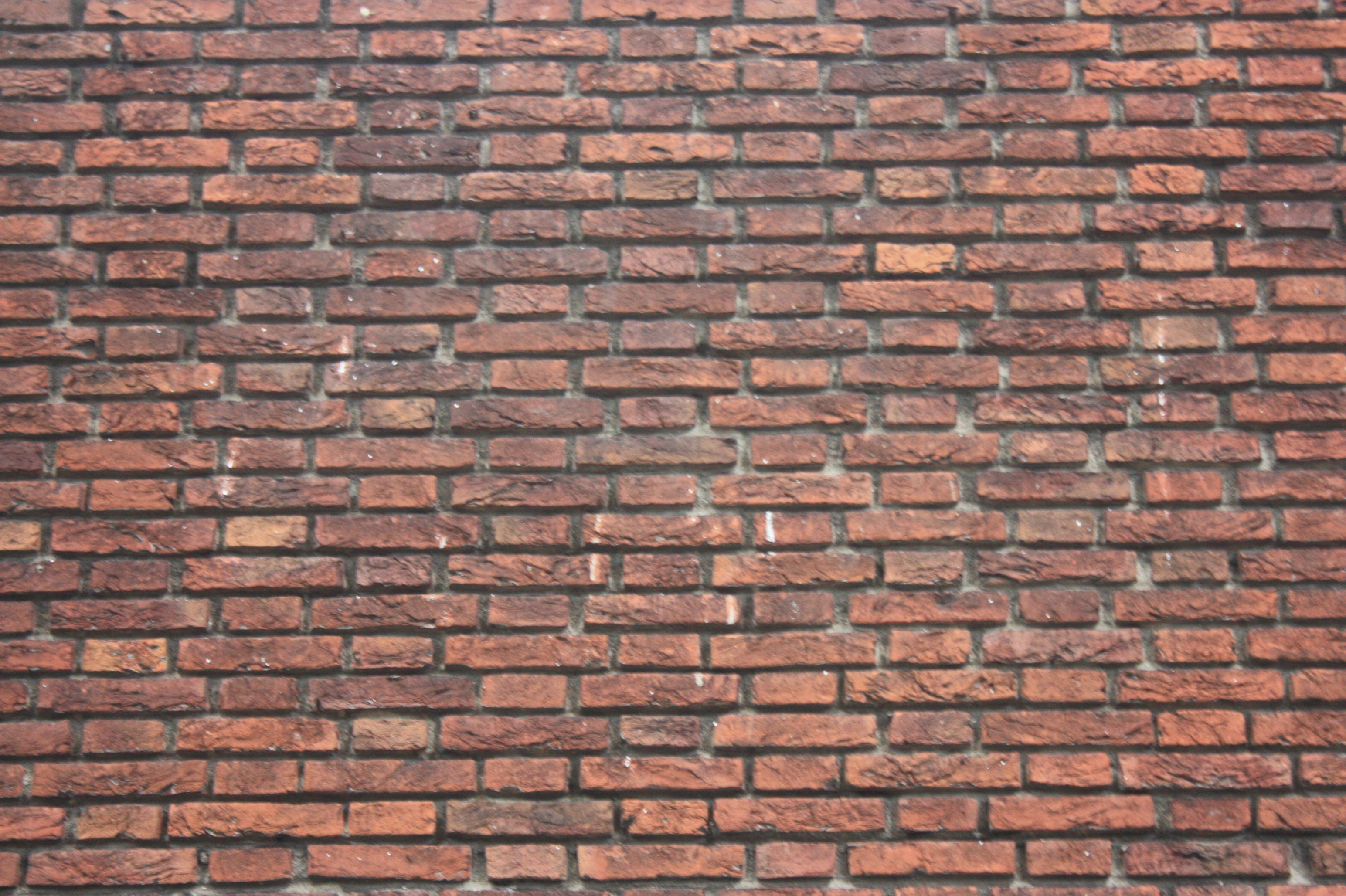 This bond has one stretcher between headers, with the headers centred over the stretchers in the courses below.
Where a course begins with a quoin stretcher, the course will ordinarily terminate with a quoin stretcher at the other end. The next course up will begin with a quoin header. For the course's second brick, a queen closer is laid, generating the lap of the bond. The third brick along is a stretcher, and isâon account of the lapâcentred above the header below. This second course then resumes its paired run of stretcher and header, until the final pair is reached, whereupon a second and final queen closer is inserted as the penultimate brick, mirroring the arrangement at the beginning of the course, and duly closing the bond.
Some examples of Flemish bond incorporate stretchers of one colour and headers of another. This effect is commonly a product of treating the header face of the heading bricks while the bricks are being baked as part of the manufacturing process. Some of the header faces are exposed to wood smoke, generating a grey-blue colour, while other simply vitrified until they reach a deeper blue colour. Some headers have a glazed face, caused by using salt in the firing. Sometimes Staffordshire Blue bricks are used for the heading bricks.
Brickwork that appears as Flemish bond from both the front and the rear is ''double Flemish bond'', so called on account of the front and rear duplication of the pattern. If the wall is arranged such that the bricks at the rear do not have this pattern, then the brickwork is said to be ''single Flemish bond''.
Flemish bond brickwork with a thickness of one brick is the repeating pattern of a stretcher laid immediately to the rear of the face stretcher, and then next along the course, a header. A lap (correct overlap) is generated by a queen closer on every alternate course:
This bond has one stretcher between headers, with the headers centred over the stretchers in the courses below.
Where a course begins with a quoin stretcher, the course will ordinarily terminate with a quoin stretcher at the other end. The next course up will begin with a quoin header. For the course's second brick, a queen closer is laid, generating the lap of the bond. The third brick along is a stretcher, and isâon account of the lapâcentred above the header below. This second course then resumes its paired run of stretcher and header, until the final pair is reached, whereupon a second and final queen closer is inserted as the penultimate brick, mirroring the arrangement at the beginning of the course, and duly closing the bond.
Some examples of Flemish bond incorporate stretchers of one colour and headers of another. This effect is commonly a product of treating the header face of the heading bricks while the bricks are being baked as part of the manufacturing process. Some of the header faces are exposed to wood smoke, generating a grey-blue colour, while other simply vitrified until they reach a deeper blue colour. Some headers have a glazed face, caused by using salt in the firing. Sometimes Staffordshire Blue bricks are used for the heading bricks.
Brickwork that appears as Flemish bond from both the front and the rear is ''double Flemish bond'', so called on account of the front and rear duplication of the pattern. If the wall is arranged such that the bricks at the rear do not have this pattern, then the brickwork is said to be ''single Flemish bond''.
Flemish bond brickwork with a thickness of one brick is the repeating pattern of a stretcher laid immediately to the rear of the face stretcher, and then next along the course, a header. A lap (correct overlap) is generated by a queen closer on every alternate course:
Monk bond
This bond has two stretchers between every header with the headers centred over the perpend between the two stretchers in the course below in the bond's most symmetric form.The Dictionary of Art. Grove. Volume Four, Biardeau TO Brüggemann. Edited by Jane Turner. Macmillan Publishers Limited. 1996. . Page 769. The great variety of monk bond patterns allow for many possible layouts at the quoins, and many possible arrangements for generating a lap. A quoin brick may be a stretcher, a three-quarter bat, or a header. Queen closers may be used next to the quoins, but the practice is not mandatory.=Raking monk bonds
= Monk bond may however take any of a number of arrangements for course staggering. The disposal of bricks in these often highly irregular raking patterns can be a challenging task for the bricklayer to correctly maintain while constructing a wall whose courses are partially obscured by scaffold, and interrupted by door or window openings, or other bond-disrupting obstacles. If the bricklayer frequently stops to check that bricks are correctly arranged, then masonry in a raking monk bond can be expensive to build. Occasionally, brickwork in such a raking monk bond may contain minor errors of header and stretcher alignment some of which may have been silently corrected by incorporating a compensating irregularity into the brickwork in a course further up the wall. In spite of these complexities and their associated costs, the bond has proven a common choice for constructing brickwork in the north of Europe. Raking courses in monk bond mayâfor instanceâbe staggered in such a way as to generate the appearance of diagonal lines of stretchers. One method of achieving this effect relies on the use of a repeating sequence of courses with back-and-forth header staggering. In this grouping, a header appears at a given point in the group's first course. In the next course up, a header is offset one and a half stretcher lengths to the left of the header in the course below, and then in the third course, a header is offset one stretcher length to the right of the header in the middle course. This accented swing of headers, one and a half to the left, and one to the right, generates the appearance of lines of stretchers running from the upper left hand side of the wall down to the lower right. Such an example of a raking monk bond layout is shown in the New Malden Library,Sussex bond
This bond has three stretchers between every header, with the headers centred above the midpoint of three stretchers in the course below. The bond's horizontally extended proportion suits long stretches of masonry such as garden walls or the run of brickwork over a ribbon window; conversely, the bond is less suitable for a surface occupied by many features, such as a Georgian façade. The relatively infrequent use of headers serves to make Sussex bond one of the less expensive bonds in which to build a wall, as it allows for the bricklayer to proceed rapidly with run after run of three stretchers at a time.One stretching course per heading course
English bond
This bond has alternating stretching and heading courses, with the headers centred over the midpoint of the stretchers, and perpends in each alternate course aligned. Queen closers appear as the second brick, and the penultimate brick in heading courses. A muted colour scheme for occasional headers is sometimes used in English bond to lend a subtle texture to the brickwork. Examples of such schemes include blue-grey headers among otherwise red bricksâseen in the south of Englandâand light brown headers in a dark brown wall, more often found in parts of the north of England.'' Arch. Review'', p. 242. THE BONDING OF BRICKWORK. P.M. Stratton. Harappan architecture in South Asia was the first use, anywhere in the world, of so-called English bond in building with bricks. An ancient example of alternating courses of headers and stretchers, is found on Malta. The ruins of the Ggantija Temple on the island of Gozo consist of two temples and a surrounding wall dating back to the Neolithic Age (3600â250 BCE); some stones are as long as 5 meters weighing over 50 tonnes.English cross bond
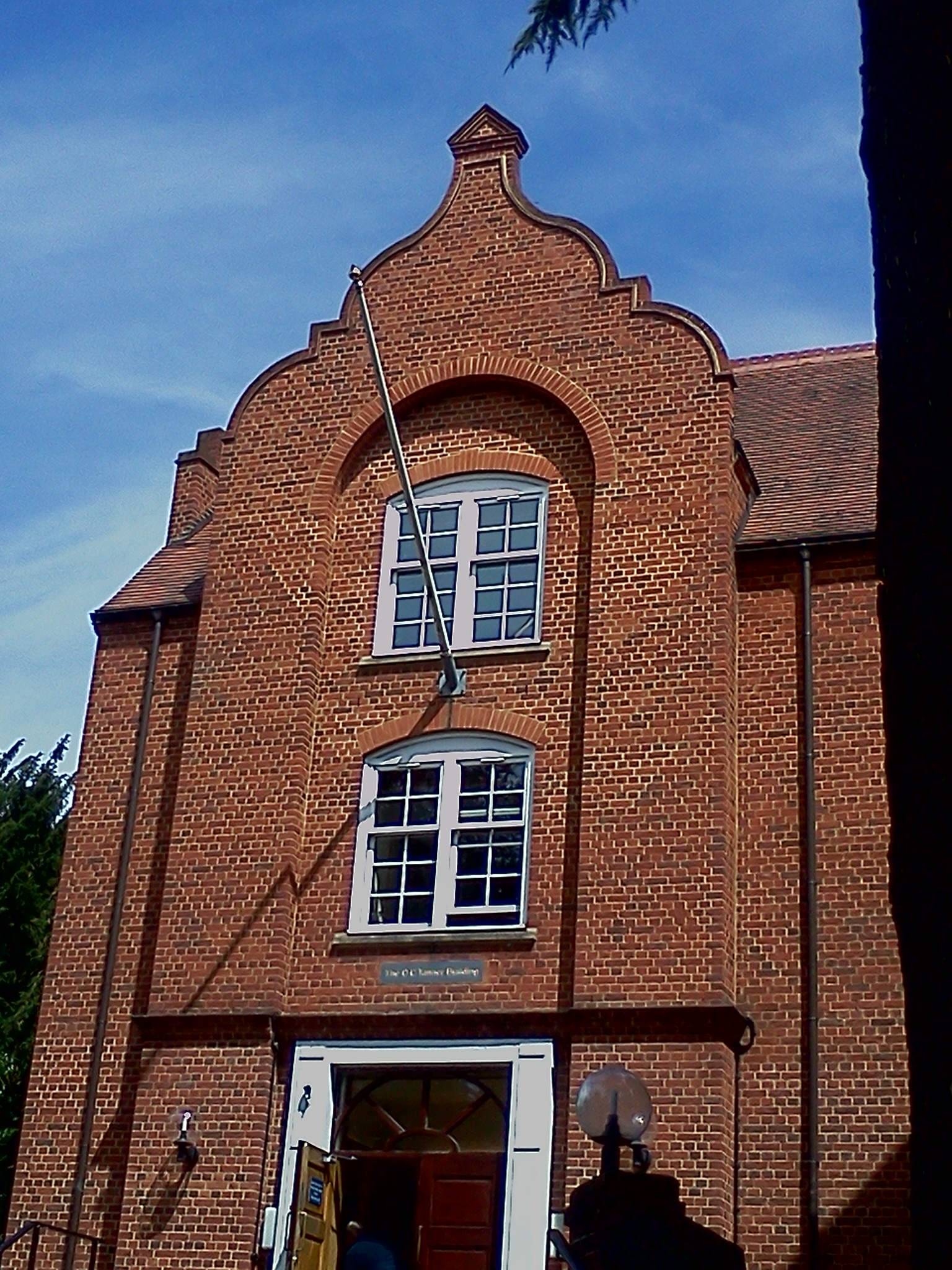 This bond also has alternating stretching and heading courses. However, whilst the heading courses are identical with those found in the standard English bond, the stretching courses alternate between a course composed entirely of stretchers, and a course composed of stretchers half off-set relative to the stretchers two courses above or below, by reason of a header placed just before the quoins at either end. The bond is widely found in Northern France, Belgium and the Netherlands.
Large areas of English cross bond can appear to have a
This bond also has alternating stretching and heading courses. However, whilst the heading courses are identical with those found in the standard English bond, the stretching courses alternate between a course composed entirely of stretchers, and a course composed of stretchers half off-set relative to the stretchers two courses above or below, by reason of a header placed just before the quoins at either end. The bond is widely found in Northern France, Belgium and the Netherlands.
Large areas of English cross bond can appear to have a Dutch bond
This bond is exactly like English cross bond except in the generating of the lap at the quoins. In Dutch bond, all quoins are three-quarter batsâplaced in alternately stretching and heading orientation with successive coursesâand no use whatever is made of queen closers. To the Dutch this is simply a variant of what they call a cross bond.Two or more stretching course per heading course
English garden wall bond
This bond has three courses of stretchers between every course of headers. For the standard English garden wall bond, headers are used as quoins for the middle stretching course in order to generate the lap, with queen closers as the penultimate brick at either end of the heading courses. A more complex set of quoins and queen closers is necessary to achieve the lap for a raking English garden wall bond. The heading course in English garden wall bond sometimes features bricks of a different colour to its surrounding stretchers. In English chalk districts, flint is substituted for the stretchers, and the headers constitute a lacing course.Scottish bond
This bond has five courses of stretchers between every course of headers. The lap is generated by the use of headers as quoins for the even-numbered stretching courses, counting up from the previous heading course, with queen closers as the penultimate brick at either end of the heading courses.American, or common bond
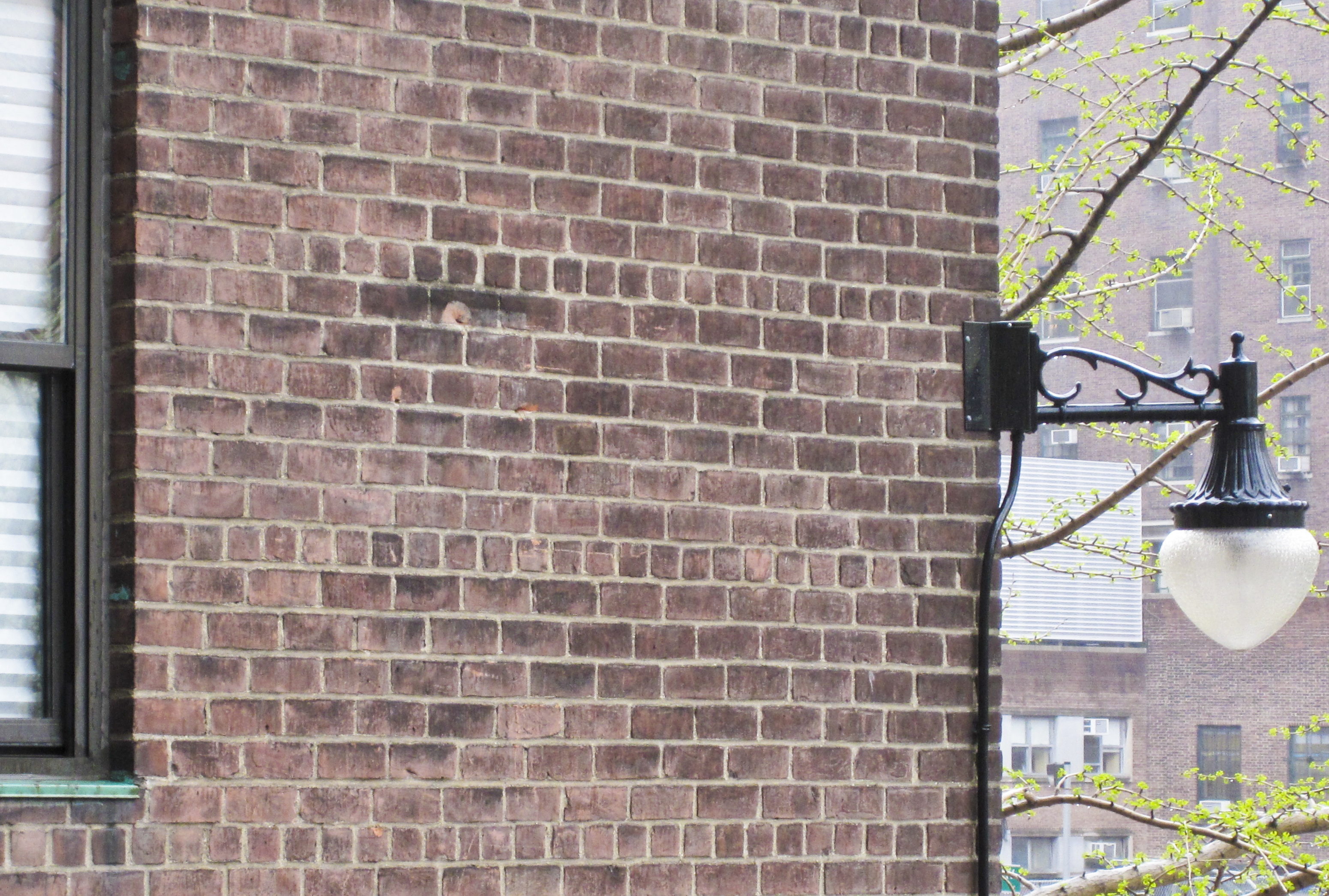 This bond may have between three and nine courses of stretchers between each course of headers. Six is the most common number of courses of stretchers.
Headers are used as quoins for the even-numbered stretching courses, counting up from the previous heading course, in order to achieve the necessary off-set in a standard American bond, with queen closers as the penultimate brick at either end of the heading courses.
The brick Clarke-Palmore House in Henrico County, Virginia, has a lower level built in 1819 described as being American bond of three to five stretching courses between each heading course, and an upper level built in 1855 with American bond of six to seven stretching courses between each heading course. an
This bond may have between three and nine courses of stretchers between each course of headers. Six is the most common number of courses of stretchers.
Headers are used as quoins for the even-numbered stretching courses, counting up from the previous heading course, in order to achieve the necessary off-set in a standard American bond, with queen closers as the penultimate brick at either end of the heading courses.
The brick Clarke-Palmore House in Henrico County, Virginia, has a lower level built in 1819 described as being American bond of three to five stretching courses between each heading course, and an upper level built in 1855 with American bond of six to seven stretching courses between each heading course. an''Accompanying four photos at Virginia Historic Landmarks Commission, undated''
Only stretching or heading courses
Header bond
All bricks in this bond are headers, but for the lap-generating quoin three-quarter bat which offsets each successive courses by half a header. Header bond is often used on curving walls with a small radius of curvature. In Lewes, Sussex, England UK many small buildings are constructed in this bond, using blue coloured bricks and vitrified surfaces.Stretcher, or running bond
All bricks in this bond are stretchers, with the bricks in each successive course staggered by half a stretcher. Headers are used as quoins on alternating stretching courses in order to achieve the necessary off-set. It is the simplest repeating pattern, and will create a wall one header thick.Raking stretcher bond
Also consists entirely of courses of stretchers, but with the bricks in each successive course staggered in some pattern other than that of standard stretcher bond.One or more stretching courses per alternating course
Flemish stretcher bond
Courses of mixed rowlocks and shiners
Rat-trap bond
 Rat-trap bond (also Chinese bond) substantially observes the same pattern as Flemish bond, but consists of rowlocks and shiners instead of headers and stretchers. This gives a wall with an internal cavity bridged by the rowlocks, hence the reference to rat-traps.
Rat-trap bond (also Chinese bond) substantially observes the same pattern as Flemish bond, but consists of rowlocks and shiners instead of headers and stretchers. This gives a wall with an internal cavity bridged by the rowlocks, hence the reference to rat-traps.
One shiner course per heading course
Dearne's bond
Dearne's bond substantially observes the same pattern as English bond, but uses shiners in place of stretchers.Non-load-bearing bonds
Courses of mixed shiners and sailors
Single basket weave bond
A row of single basket weave bond comprises pairs of sailors laid side-by-side, capped with a shiner, alternating with pairs of sailors laid side-by-side sat atop a shiner. Subsequent rows are identical and aligned with those above.Double basket weave bond
A row of double basket weave bond comprises pairs of shiners laid atop one another, alternating with pairs of sailors laid side by side. The following row is off-set so the pair of shiners sits below the pair of sailors in the row above. This results in bricks arranged in pairs in a square grid so that the join between each pair is perpendicular to the join of the four pairs around it.Herringbone bond
TheBrickwork built around square fractional-sized bricks
Pinwheel bond
Pinwheel bond is made of four bricks surrounding a square half-brick, repeated in a square grid.Della Robbia bond
A pattern made of four bricks surrounding a square brick, one-quarter the size of a half-brick. It is designed to resemble woven cloth. Another, similar pattern is called the interlacing bond.Diapering
 Brickwork formed into a diamond pattern is called
Brickwork formed into a diamond pattern is called Flemish diagonal bond
Flemish diagonal bond comprises a complex pattern of stretcher courses alternating with courses of one or two stretchers between headers, at various offsets, such that over ten courses, a diamond-shaped pattern appears.Damp-proof courses
Moisture may ascend into a building from the foundation of a wall or gain ingress into a building from a wet patch of ground, where it meets a solid wall. The manifest result of this process is called damp. One of many methods of resisting such ingresses of water is to construct the wall with several low courses of dense engineering bricks such as Staffordshire blue bricks. This method of damp proofing appears as a distinctive navy blue band running around the circumference of a building. It is only partially effective, as in spite of the lower courses of brick being more moisture resistant the mortar bedding and perpends joining the bricks remain permeable. Emmitt, p. 154.See also
* * * * * *References
Bibliography
* * * * * * * *External links
Joshi, A. & Ryan, D. (20 June 2013). Bricks: A Light Foundation
{{Stonemasonry Bricks Construction Building engineering